Where on Earth, Prof?
Reflections on the life and death of Professor Mburumba Kerina
by Manni Goldbeck
“Where on the Earth would you like to be buried, Prof?” I asked on one of our journeys together as the Namibian countryside rolled gently past in rich colours of tawny-gold. He replied without hesitation. He wanted to be buried on Namibian soil next to the grave of his mentor and father-figure, the renowned Herero leader, Chief Hosea Kutako.
When he passed on last year, however, this was not to transpire. There was much contention as to where Kerina – who, at the behest of Hosea Kutako, petitioned at the UN for independence for the people of South West Africa and who contributed to the apt name of the country – should be buried. As it wasn’t possible for him to be buried in Okahandja near the great Herero chief, everyone was in a quandary. Should he be buried at Hero’s Acre or should he be buried in one of Namibia’s cemeteries? While everyone was waiting for official confirmation of where his final resting place was going to be, his body was transported around the city. A decision was finally made and he was laid to rest near his mother Magdalena in the Khomasdal cemetery.
It gave me food for thought. Why the quandary? And I realised that Prof with his many bloodlines represented so many groups of people. Everybody claimed him. He had an air of universality about him; he did not fit entirely to any one people or any one place.
He had Canadian, British, German, Owambo and Herero roots (and he even claimed Nama and San). He essentially belonged to everyone. His great grandfather, the 19th century explorer and trader Canadian-born Frederick Green, had married a Herero woman descended from a long line of Herero chiefs. They had a daughter who grew up to marry a British – and then a German – man. And their daughter, Kerina’s mother, had married an Owambo man. Prof’s origins embraced a wealth of ethnicities.
If he could be buried anywhere on Earth or his ashes scattered at any place on the planet, I thought he would opt for the Namib; on the banks of the Swakop River where Green had died on his way to Walvis Bay; in Okahao in the North, home of his Oshiwambo father; with his Herero grandmother in Tsumeb; in New York where he lived and taught for many years and where his ex-wife Jane played such a large part in his intellectual life. But, Kerina wanted his final resting place to be next to the man who he held in such high esteem.
I gained a clearer understanding of his universality when I visited him at his home and looked around the room that was lined with photos of luminaries who had rubbed shoulders with him in his lifetime, many of them photographed with him. I jokingly dubbed the room his ‘Hall of fame’. He had crossed paths with John F Kennedy, had spent time with Botswana’s first president Seretse Khama, had met Mahatma Gandhi, the Pope, Nelson Mandela and Toivo ya Toivo, among others, and even the musicians Louis Armstrong and Miriam Makeba. He had travelled around the world and convened with leaders of Africa, Asia and China. He was one of those Namibian figures who came from humble beginnings and followed a greater calling.
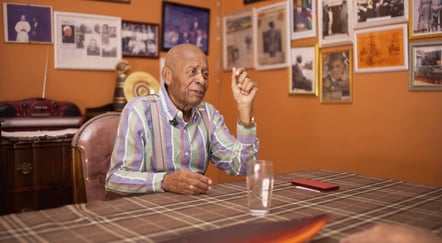
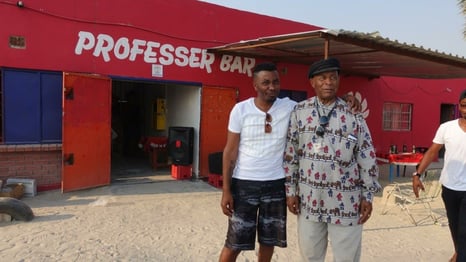
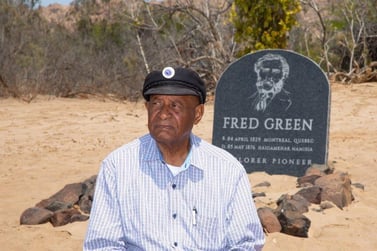
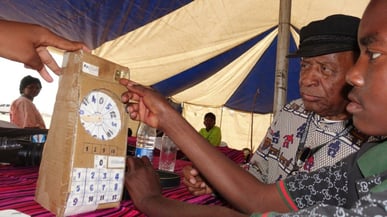
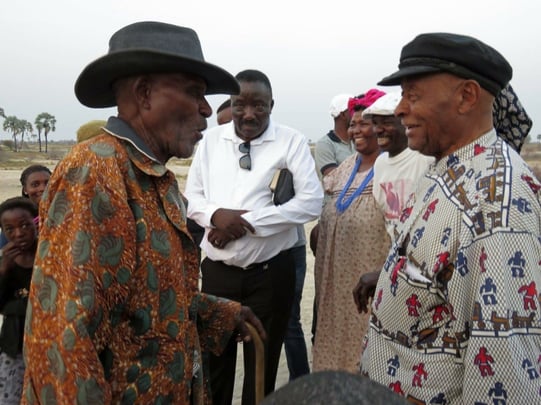
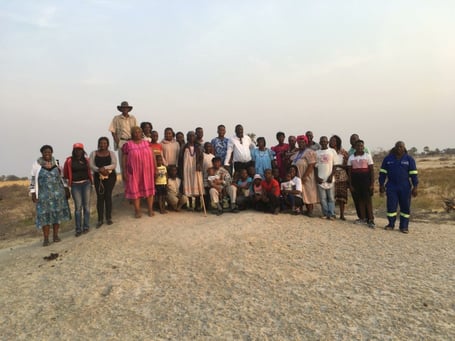
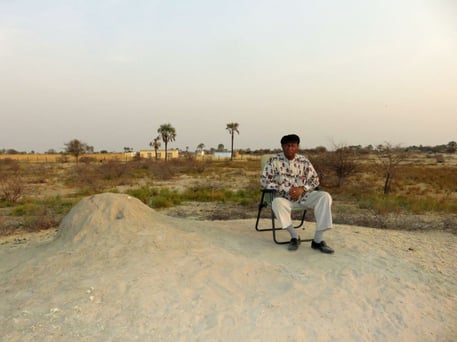
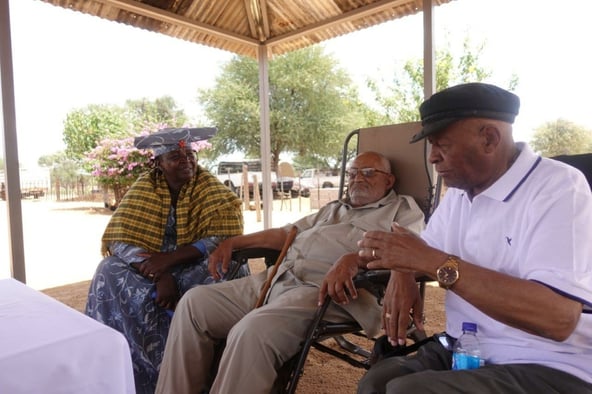
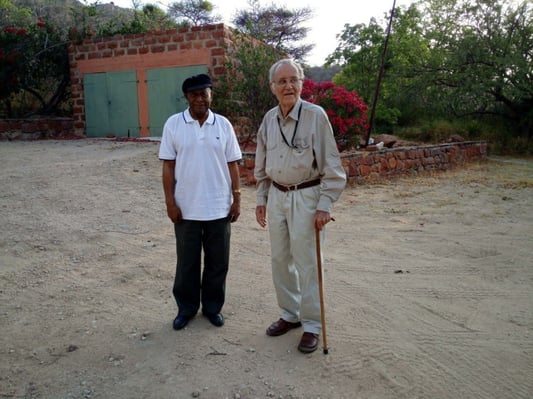
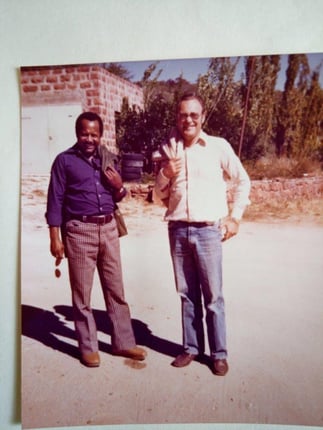
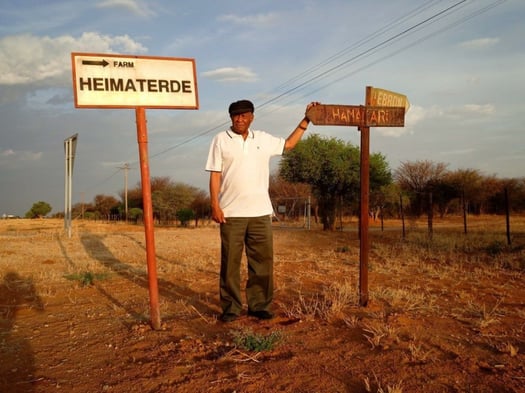
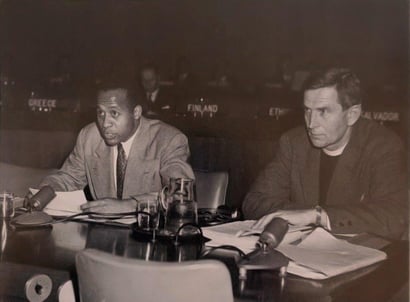
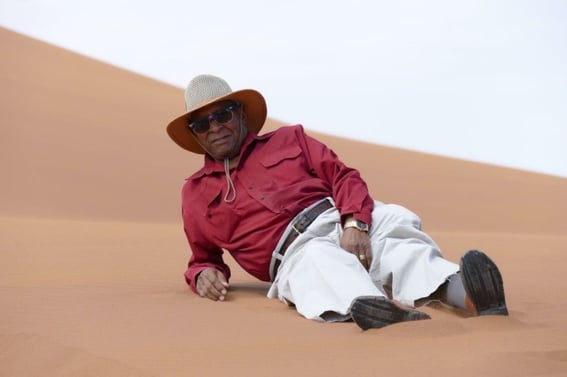
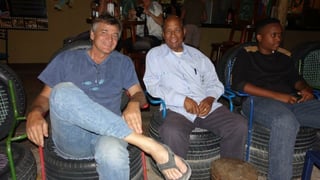
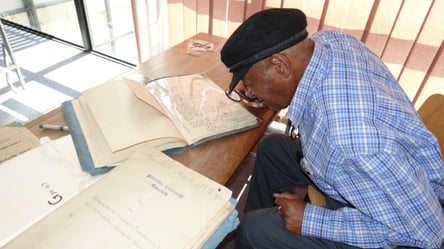
His high time, as I understand it, was when he stood in the limelight petitioning alongside Reverend Michael Scott for an independent country, and this was his biggest contribution to Namibia.
Erich Getzen (Mburumba Kerina, his traditional name, he would adopt later to give him a stronger identity and connection to his roots) left the country on a boat when he was just 19 years old with messages from Hosea Kutako conveying the unfair conditions in the country to the outside world sewn into his underpants. He studied at Lincoln University and in Indonesia, and at 24 years old was petitioning alongside Rev Michael Scott at the UN (see main photo), later to be joined by other well-known Namibian petitioners. He was enormously talented.
Around the same period, he helped establish the South West Africa National Union (SWANU) and the Owamboland People’s Organisation (OPO), as well as renaming it as the South West Africa People’s Organisation (SWAPO) later on. Once it had gained momentum, he resigned and disappeared from the political arena, teaching at a university in New York and raising a family. He made a comeback in the 1970s, participating in various political organisations. He refused to become an American, never prepared to give up his Namibian citizenship, and returned to Namibia before independence in 1989, where he became a member of Namibia’s constituent assembly and was elected as one of the writers of Namibia’s exemplary constitution.
I only had the good fortune of meeting Prof Kerina in the last decade of his life and was amazed at the vitality of the man in his 80s. Over the years, he introduced me to his world, sharing his humorous childhood stories of hiding behind his mother’s voluminous Herero skirts – and hefty bulk, and the stories of the 50s, 60s and 70s. I learned that although he had been around the world and back, and was instrumental in suggesting a name for the independent country at the UN, he had never been to the Namib. (He had suggested that the country be known as the Republic of Namib and that the nationalism be called Namibianism. It was a name that evolved into Namibia and was adopted by the nations of the world.) So, my first journey with him was to the Namib and I have memories of him sitting comfortably in the desert, letting the burnished sand run through his fingers.
And over the years we travelled all over Namibia tracing his roots, visiting the grave of his grandmother Ida (Kaera) in Tsumeb, visiting his father’s family in his village on the outskirts of Okahao and paying our respects together with his family at his father’s unmarked grave surrounded by makalani palms. We visited Namibia’s Founding Father, Dr Sam Nujoma, and they reminisced about how they played soccer together as young children. (Prof claimed that he brought the first soccer ball to the North.) We went to Walvis Bay. We travelled to Okakarara and Waterberg where the Herero fought the German colonials in the notorious Battle of Ohamakari and where on the farm Heimaterde, known as ‘Omayo ya Kerina’ (Kerina’s teeth) in Otjiherero, Green stored his ivory on his return trip from Lake Ngami. The journeys didn’t end there as we explored the North, bumping over the sandy tracks searching for Lake Oponona, visiting the Olufuko Festival in Outapi, travelling through Etosha and finally visiting the burial site of Green on the banks of the Swakop River. A highlight was being a guest at his three-day traditional Herero wedding in the Omaheke, which he saw as completing a cycle in his life.
Although Prof may have stopped petitioning at the UN, I always think that he never stopped petitioning. He would stop by my office once a week with a letter in hand to be typed out about some issue or other addressed to presidents and world leaders, not only to make Namibia a better place, but to make the world a better place. He continued even during the Covid period, undaunted by the virus, which would eventually be his last adversary.
He still had so much fight in him, coupled with his exceptional intelligence which never left him in his advancing years.
In reflecting on my time with Kerina, I feel privileged to have spent so many hours and so many days with him. I enjoyed the humorous and demanding sides of his character. It left such a mark on my life, opening up my eyes and bringing an understanding to me of a full life led in such a different way to my own.
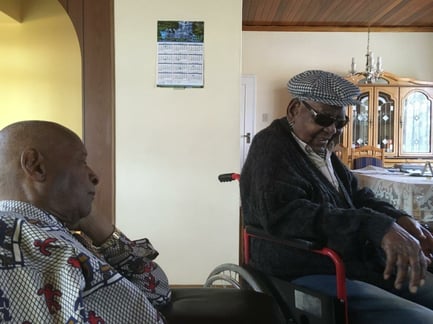
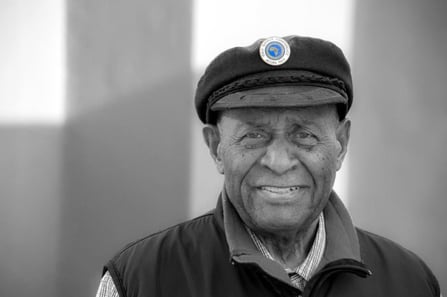
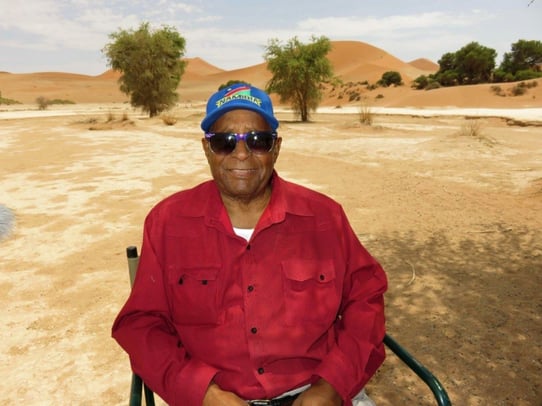
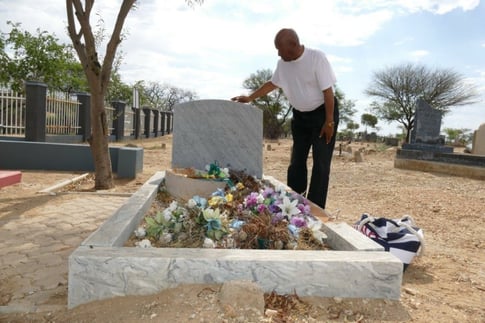


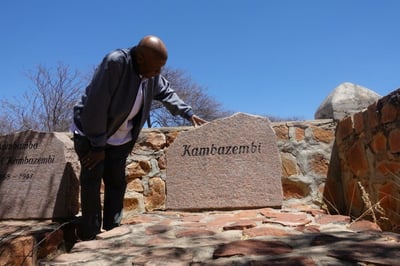
I strongly recall his anger when he read the inscription on the memorial stone in Swakopmund erected to commemorate the Herero prisoners of war who died during the 1904-1908 wars with the German colonial forces, which said how the prisoners had ‘perished under mysterious circumstances’.
His sensitivity was easily apparent and I saw him shed tears on several occasions, including at the grave of his ‘brother’ Bernhard Gutsche, whose fairer-skin photo was used on his travel documents to enable him to exit the country and who was killed in the Old Location uprising in Windhoek in 1959.
I can only guess at the charisma he had in his younger years when I see the black and white photos of the strapping Kerina petitioning next to Michael Scott and from which I can glimpse the power and conviction he held that his county was worth the fight, a decision which required him to live his life in exile until independence was gained in 1990.
As we got to know each other and our friendship grew, I agreed to record Prof’s life story, and we recorded tons and tons of video clips in the studio and made recordings along the road. It is so complexed and such a Herculean task that that it may very well take another decade to do a good job of it. But I will get there, in the interest of the country and for future generations to remind them of this part of history and the role he played in it.
What I have come to realise, is that in fitting into so many groups, Kerina represented the diversity Namibia values so highly. The country was ingrained in his being, so entrenched was he in its history, its various ethnicities, its hardships and its victories.
And so, I listened and watched the news last year in 2021, hearing how his body was transported from graveyard to graveyard and no-one knew where to place him. But, I knew where he belonged. He belonged to Namibia as a whole, to whom he gave his best years and his most fighting spirit.
I’ll never forget asking him “Where on the Earth would you like to be buried, Prof?” and his swift reply: “Next to Hosea Kutako.”
Thank you, Prof, for also enriching my life.




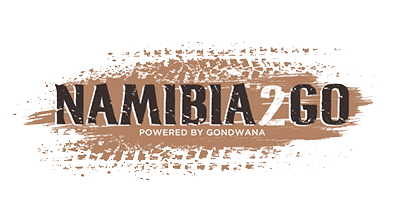

.png)

SUBMIT YOUR COMMENT